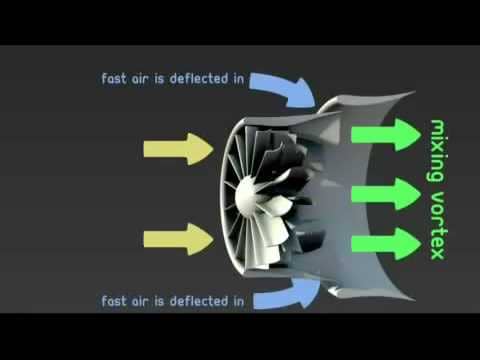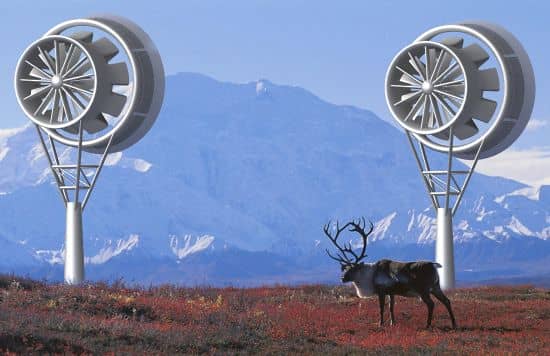FloDesign Wind Turbine has developed an innovative wind turbine that would cut the electricity generation cost to half. The design of the Wind Jet dramatically increases the energy harnessed from the wind while significantly reducing the cost.

FloDesign Wind Turbine is a Wilbraham-based firm that used the jet engine technology to develop a wind turbine that outperforms the conventional wind turbines. The traditional design of the turbines forces half of the oncoming air to go around the blades rather than forcing it through them. Accordingly, the Betz limit dictates that a typical wind turbine can harness only 59.3 percent of the wind energy at its best.

The Wind Jet developed by the FloDesign employs blades covered in shrouds to direct the air through the turbine blades. The increased flow of air through the blades speeds up the turbines and enhance power generation. The energy production of the Wind Jet matches that of a conventional turbine with twice as big blades.

The ingenuine and compact design of the Wind Jet allows these innovative wind turbines to be placed closely together thus enhancing the energy generated per acre. Stanley Kowalski, CEO of the FloDesign, commented on the previous attempts to design a shrouded turbine:
“The idea of enshrouding wind-turbine blades isn’t new. But earlier designs were too big to be practical, or they didn’t perform well, in part because the blades had to be very closely aligned to the direction of the wind–within three or four degrees. The new blades are smaller and can work at angles of up to 15 to 20 degrees away from the direction of the wind.”
The front view of the Wind Jet resembles the air intake of a jet engine. The air current hits the fixed blades called stator. Stators redirect the air stream to hit the movable blades called the rotor.

After rotating the rotor, the air emerges from the rotor travelling at a lower speed than the air outside. The faster-moving air is directed by the shroud into an area behind the rotors. The slow-moving air is accelerated by the fast-moving air stream. This mechanism allows an area of low pressure to develop behind the turbine blades, allowing the Wind Jet to suck in more air.
Paul Sclavounos from the department of mechanical engineering at the MIT believes that the design of the Wind Jet could even triple the power output of a wind turbine. The only question is the maintenance and construction cost of these turbines.

FloDesign has already developed a working prototype of the Wind Jet for wind-tunnel tests. Eventually, the company plans to make turbines as large as one megawatt.



Bernouli’s Theories and principles always does the trick..